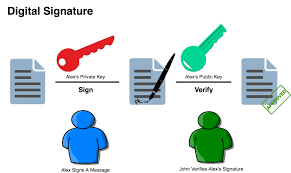The issue of the (not really) private key
Each community advancement adventure eventually deals with the issue of viable, advantageous, and secure key administration. It settles the score more awful with regards to blockchain projects, where the private key used to send savvy contracts on creation holds $$$ worth of ether and normally has the ability to administer contracts. To keep the hidden key protected, a partner would have to show creation related activities to himself. That is the hypothesis.
Practically speaking, notwithstanding, things appear to be unique. For some reasons, the partner may not be – and typically isn’t – liable for sending, updating, or keeping up with the code on creation, so he shares the private key with someone else, making it not really private any longer. Devs will request that this individual perform different procedure on creation by disclosing what to do bit by bit or by giving contents that require the private key to execute. I can imagine numerous things that might potentially turn out badly with this methodology:
An individual endowed with the key passes on the undertaking and the vital should be imparted to his replacement which may not be so dependable,
The content given by a dev has noxious code that takes the private key,
An individual is overpowered with devs demands and commits an error during an update,
An individual loses the key…
Etc.
This sounds unnerving yet because of absence of better tooling, this ‘system’ is generally utilized across Defi projects. what can be done?
KMS to the salvage
Quite possibly the most well known way to manage mysteries in IT is to utilize “secret as an assistance” arrangements like AWS Key Management Service which makes coordinated effort successful and secure. Utilizing this help an AWS client can create another key and set which IAM clients/jobs can utilize it for marking. Above all, keys are created by AWS and it is basically impossible to trade them. IAM clients can be given admittance to utilize the key for marking without learning the fundamental private key. It could be said, this work process is like utilizing an equipment wallet, yet rather than utilizing actual Ledger Nano, the engineer demands that KMS produces a mark.
At the point when another colleague needs to play out a sending, they get a suitable IAM job and gains admittance to required privileged insights. In the event that a part leaves the group, the IAM job is disavowed and there is no danger of revelation. Utilizing this work process, the partner of the venture stays in charge of the private key and can appoint and renounce admittance to it when required.
Utilizing KMS by and by
It takes a touch of work to snare KMS and web3 suppliers together. Since we’re utilizing this methodology in Dynam1c Limited across many activities, we’ve chosen to open-source the devices we’re utilizing and “show preemptive kindness”.
We’ve made two bundles:
To make another Ethereum account, the client needs to make a KMS key. While doing this in the AWS console, this is the right method for designing the key:
The critical should be:
Key sort: Asymmetric
Key utilization: Sign and Verify
Key spec: ECC_SECG_P256K1
The subsequent stage is get familiar with the location of the record that you’ve recently made. It’s gotten from the public key of the key, however the change is slightly muddled.
We ordinarily do it by designing the supplier utilizing one of the bundles above and playing out the ‘eth_accounts’ call.
For instance, when utilizing a hardhat you can do:
$ hardhat console – – network ropsten
Making Typechain relics in registry types for target ethers-v5
Effectively created Typechain ancient rarities!
Welcome to Node.js v12.22.6.
getNamedAccounts().then(console.log)
Guarantee { }
{ deployer: ‘0x541dD0eC22fB1213d2C2B1fc83B5F302cEFF79A2’ }
On the other hand utilizing the ordinary web3 supplier:
const { KMSProvider } = require(‘@Dynam1c Limitedeth-endorser kms’)
const supplier = new KMSProvider({
providerOrUrl: ‘https://ropsten.infura.io/v3/${yourInfuraKey}’,
keyId: yourKmsKeyId,
})
provider.getAddress().then(console.log)
For additional subtleties of the arrangement if it’s not too much trouble, allude to the Readme of the supplier bundle you’re utilizing.
When you realize your Ethereum address you can send some ETH to it and you’re good to go to begin utilizing it for organizations or potentially sending exchanges.





